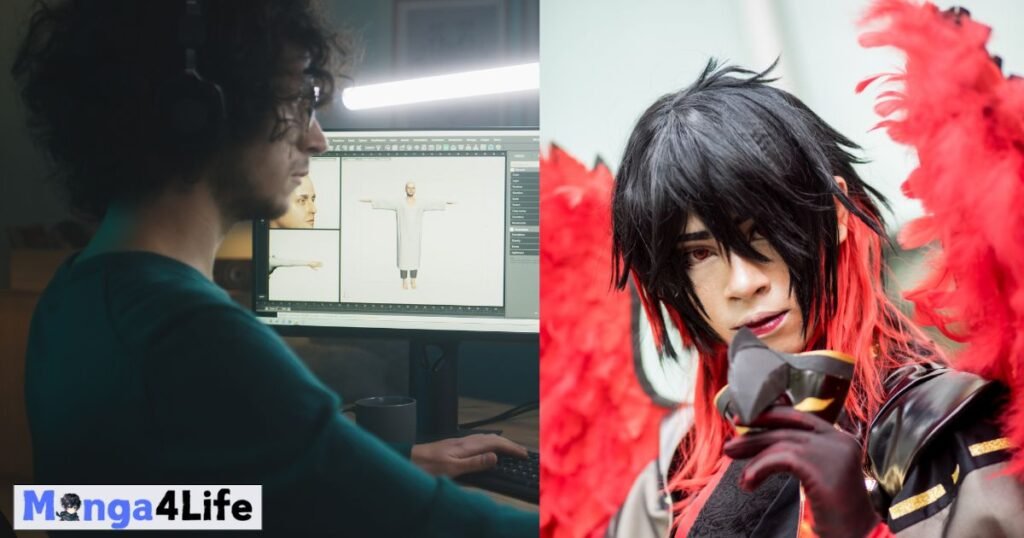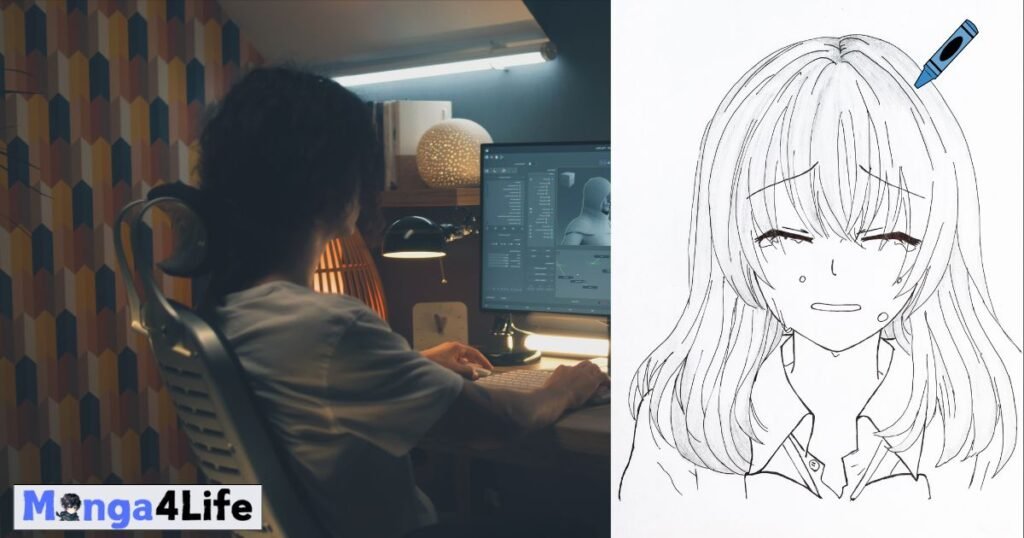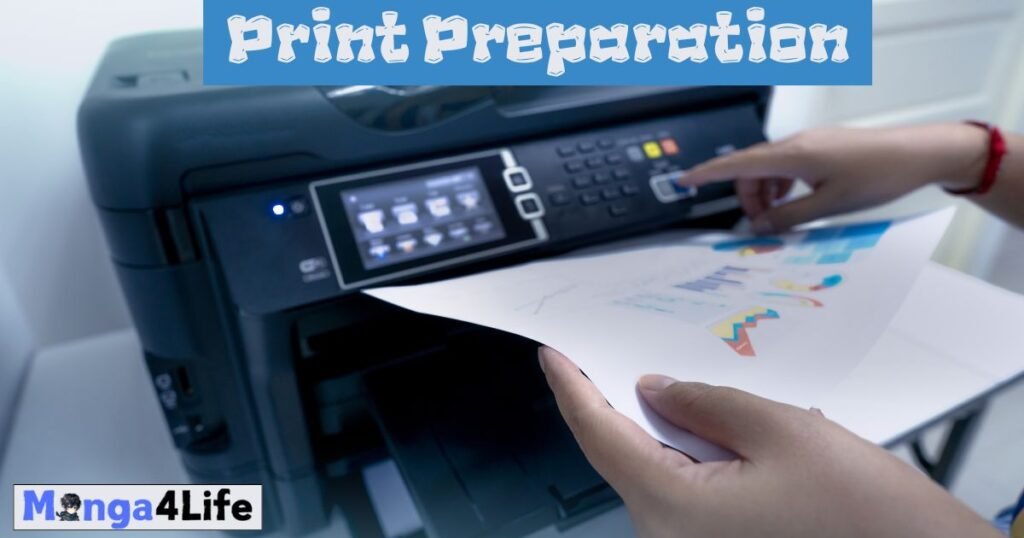How To Make A Manga Book Cover

Concept Development
Brainstorm Ideas Based on the Manga’s Genre and Themes
Begin by identifying the genre of your manga. Genres such as action, romance, or fantasy significantly influence the cover design. Explore themes within your story that resonate deeply with your intended audience. Consider how these themes can be visually represented on your cover. Think about what emotions you want to evoke in potential readers.
Gather inspiration from other manga covers in the same genre. Write down keywords that capture the essence of your story. Use these keywords to spark creative ideas for your cover.
Create a Rough Sketch of the Cover Layout
Start by drawing basic shapes to represent character placements and backgrounds. Ensure the title is prominently featured, catching the viewer’s eye immediately. Place main characters in dynamic poses that show their personalities and emotions. Experiment with different arrangements to find the most appealing layout.
Keep in mind the balance between text and visuals on the cover. Leave space for logos, ratings, or other essential elements. Review your rough sketch and make adjustments as necessary. A well-planned layout will guide your final design effectively.
Gather Reference Materials
Collect Inspiration from Existing Manga Covers, Art Styles, and Typography
To create an engaging manga cover, first explore various existing manga covers. Look for covers that resonate with your story’s genre and themes. Observe the art styles used in successful manga for added inspiration. Pay attention to how artists convey emotions through characters and scenes. Collect examples of typography that effectively capture the essence of different genres.
Make a folder to save your favorite covers and art styles for reference. This collection aids in sparking your creativity as you design your cover.
Study Color Palettes That Resonate with Your Story’s Mood
Understanding your story’s mood is crucial when choosing color palettes. Research the emotional impact of different colors on audiences. Explore how color choices can effectively reflect the story’s genre. Gather images of color schemes that evoke similar feelings in your narrative.
Use color palette tools available online for additional inspiration. Create a mood board that visually represents your story’s mood through colors. This board can guide your coloring decisions throughout the design process.
Character Design

Design Main Characters Who Will Feature Prominently on the Cover
When designing characters for your manga cover, keep their roles in mind. Each character should represent critical traits of your story’s narrative. Focus on unique features that distinguish them from others in the genre. Utilize clothing styles that reflect their personality and background convincingly. Choose color schemes that align with their emotions and themes throughout the manga.
Highlight their expressions to convey feelings and motivations effectively. Use dynamic poses that showcase their personalities and potential actions. Ensure character designs complement each other for a harmonious visual effect.
Consider how background elements interact with your characters for overall composition. Maintain clarity and simplicity so viewers can connect easily with them.
Ensure Characters Are Expressive and Reflect Their Personalities
Create facial expressions that communicate each character’s thoughts and emotions instantly. Use body language to express each character’s confidence, fear, or vulnerability. Every aspect of design should echo character development throughout the manga. Align character designs with the story’s tone to enhance relatability for readers. Draw inspiration from real-life emotions to create authentic portrayals.
Make sure each character has a unique silhouette that stands out distinctly. Incorporate small details that hint at their backstory and growth. Your characters should draw readers in and invite them to explore their stories.
By focusing on these elements, you’ll create engaging and memorable characters. This approach can significantly enrich the overall cover design and impact.
Background Design
Choose a Fitting Background That Complements the Characters and the Overall Story
Selecting an appropriate background enhances the overall visual impact of your manga cover. A well-designed background adds depth and context to the characters featured. Consider the emotional tone behind your story when choosing a background. A gradient can create a simple yet effective backdrop for your design. Alternatively, detailed scenes can immerse readers in your manga’s setting.
Ensure the background does not overshadow the main characters, keeping the focus on them. Use colors that harmonize with your characters’ color schemes and emotions.
Balance simplicity and detail to create an appealing visual experience. Test different background ideas until you find the best fit. Ultimately, the background should support the narrative and captivate your audience.
Composition and Layout
Arrange Characters and Titles to Create a Balanced Composition
Creating an appealing manga cover requires careful arrangement of characters and titles. Start by identifying the key elements that need prominence. Use positioning to ensure characters naturally lead the viewer’s gaze.
Balance more prominent characters with smaller ones to create visual harmony. Place the title in a position that draws immediate attention from viewers. Make sure the title’s size contrasts nicely with other elements on the cover.
Consider how the characters’ poses effectively guide the eyes toward the title. Test various layouts to find the most balanced arrangement. Highlighting characters’ actions can enhance a dynamic and engaging composition. Remember, a well-composed cover encourages readers to explore the manga further.
Focus on the Hierarchy of Elements
Establish a clear hierarchy to direct attention throughout your cover design. Position the title prominently at the top of the composition. Main characters should follow the title closely for added impact. Include subtitle texts underneath the main title to provide further context. Ensure that all elements maintain a clear visual flow for readability.
Use contrasting colors to make essential elements highly visible. Consider spacing to avoid clutter in your design. Keep the layout simple yet effective in guiding viewer understanding. A strong hierarchy will convey the essence of your manga instantly. This strategic approach enhances the overall appeal of your manga cover.
Typography Selection
Choose Fonts That Align with the Manga’s Tone
Selecting the right font is critical to expressing your manga’s unique tone. For playful themes, choose fonts that convey fun and liveliness. Serious stories benefit from fonts that evoke professionalism and groundedness. Dramatic narratives call for fonts that showcase intensity and boldness.
Experiment with various font styles to find the perfect match for your mood. Consider how each font interacts with the overall design of your cover.
Readability is crucial to ensure viewers can easily understand the text. Play with font sizes to highlight important titles and subtitles on the cover. Font placement should naturally guide the viewer’s eye across the design.
Test several combinations to find the most effective typography arrangement. Striking the right balance in typography enhances your manga’s visual storytelling.
Coloring

Apply Colors to Characters and Backgrounds, Ensuring a Cohesive Color Scheme
Choosing the right colors enhances the overall aesthetic of your manga. Use a harmonious palette to link characters and backgrounds together. Select colors that creatively reflect the characters’ emotions and themes. Study color theory to understand how hues affect the viewer’s perception. Ensure the colors contrast effectively, making essential elements stand out distinctly.
Test different combinations before finalizing your character’s appearance and settings. Limit your color palette to prevent overwhelming the viewer.
Make sure each character has a unique but cohesive color scheme. Consider how lighting influences your color choices and shading techniques. Always keep your audience in mind when selecting colors for maximum impact.
Use Shading and Highlights to Add Depth and Dimension to the Artwork
Shading creates a three-dimensional appearance on characters and backgrounds in your manga. Use darker colors along the edges to define shapes and contours effectively.
Apply highlights to areas where light naturally hits the character, enhancing realism. Ensure that shadows and highlights align with the light source in your scene. Use various shading techniques, such as cel-shading or soft gradients, to add interest.
Experiment with different opacities to create nuanced effects in your artwork. Keep the shading consistent throughout the manga to maintain a unified look. Observe real-life objects to study how light and shadow interact.
Engaging shading can draw the reader’s attention and invite exploration. Ultimately, thoughtful shading enhances the overall visual experience of your manga.
Final Touches
Add Additional Elements, Such as Logos, Ratings, or a Barcode
Incorporating logos, ratings, or barcodes creates a professional finish to your cover. Position these elements to ensure they do not clutter the main design. Choose a location that complements the overall composition and assists viewer navigation.
Verify that logos are transparent and well-sized for easy recognition. Ratings should be visible without detracting from the title and characters. Adding a barcode ensures a polished and market-ready manga cover. Ensure that all additional elements align with the overall theme of your design.
Review the Design for Any Adjustments in Alignment, Colors, or Legibility
Take time to review your design for effective alignment and spacing. Check that characters and titles maintain a pleasing arrangement throughout the cover. Make sure your color scheme remains consistent and visually appealing in all areas. Assess text legibility to guarantee that all information is easily readable.
Adjust the contrast between text and background for improved visibility. Ensure all visual elements support the intended mood of your manga. Making these adjustments enhances the professional quality of your manga cover.
Print Preparation

Ensuring the cover is ready for printing involves several key steps. The first step is checking the resolution of your design. A high resolution of at least 300 DPI ensures sharp print quality. Next, confirm that your cover dimensions match the intended print size accurately. Always use the specific dimensions required by the printing service you choose.
Save the Final Design in the Appropriate File Format
When saving your design, choose formats like PDF or TIFF. These formats preserve quality and support high-resolution images. Avoid using formats like JPEG, as they may compress and degrade quality. Before submission, double-check your file for any missing elements or errors. Always keep a backup of your original design files for safety. By following these steps, you ensure a professional print result for your manga cover.
Feedback and Revisions
Gathering feedback is an essential step in finalizing your manga cover. Share the cover with peers or a focus group for valuable insights. Encourage honest and constructive criticism to improve your design further.
Ask specific questions to guide their feedback, making it more actionable. Take notes on recurring themes or suggestions from the feedback received. Be open to different perspectives, as they can provide fresh ideas.
Making Necessary Revisions
Evaluate all feedback carefully before implementing revisions to your cover design. Prioritize changes that enhance clarity, balance, and overall aesthetics. Adjust elements based on consistent themes in the feedback to achieve cohesion. Don’t hesitate to make bold changes if necessary to improve the design.
Conduct multiple rounds of revisions if needed, refining your cover each time. Once you finalize revisions, seek confirmation from your peers before proceeding. Maintaining a collaborative approach will significantly increase the impact and quality of the cover.
Beside the manga cover, making whole manga is also very technical task. Explore full guide “How Manga Is Created Step By Step Guide“
Frequently Asked Questions (FAQs)
How do you make a good manga cover?
To create a good manga cover:
- Start with a clear concept.
- Use striking visuals to represent your story.
- Choose an engaging title font that stands out.
- Balance images and text for easy reading.
- Consider your target audience when designing.
- Get feedback to refine your cover design and ensure it resonates.
What are manga covers made of?
Manga covers are typically printed on durable paper or card stock. They often feature vibrant colors with glossy or matte finishes. The cover art usually includes the title and key characters. Design techniques enhance the visual appeal and storytelling. Quality materials ensure longevity and protect the content inside the manga.
How to make a custom manga?
Begin by brainstorming your story concept and characters for a custom manga. Develop a detailed plot outline to guide your artwork. Sketch character designs and backgrounds for each scene. Choose a unique art style that fits your narrative. Finally, compile your work into a cohesive format, ready for printing or digital publishing.
How to make your own book covers?
Designing your own book cover starts with selecting a theme and style. Use software to create appealing visuals and solidify your layout. Ensure the title stands out against the background color. Include essential details like the author’s name and tagline. Click for print previews to confirm dimensions and colors before printing.
What software can I use for manga covers?
Various software options are available to create manga covers efficiently. Consider using Adobe Photoshop for advanced editing and effects. CorelDRAW helps design vector graphics and logos easily. For free options, GIMP and Krita offer excellent tools for artwork. Choose software based on your comfort level and project requirements.




